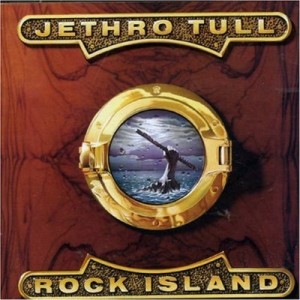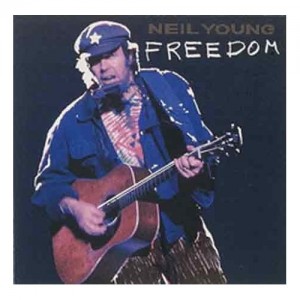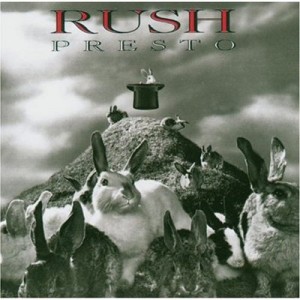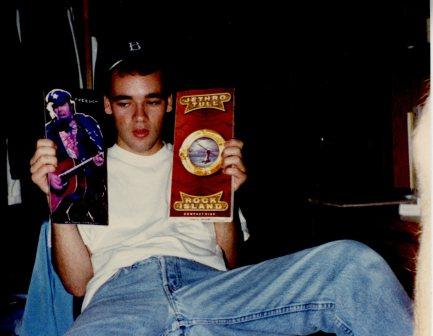(Editor’s note: Rush’s last great album (in my opinion), Presto, was released this week, in 1989. A quarter-century plus one year ago. Yikes. Here is a piece I wrote in October, 2009)
***
It was twenty years ago today…
No, seriously. Twenty years. Fall semester (because the world was still measured in summers and semesters), sophomore year. Out of all the indelible memories amassed during that four year odyssey, the concentrated experience of ’89/’90 contained a little bit of everything: the good, bad and ugly –and that was just my wardrobe. Things I did and things I saw still impact my waking hours; things I recall and things I couldn’t control still influence my subconscious and work themselves out in novels, poems and blog posts.
So, among many other things, autumn ’89 was a fortuitous time for legendary bands creating stunning and defiant statements of purpose. Neither burned out nor ready to fade away, these artists defiantly informed the world that they were not all washed up, and quite capable of making some of their career-best work. Jethro Tull, Rush and Neil Young all had ups and downs in the ’80s: all relying too much, at times, on the synthesized sounds that were de rigeur (along with laughable music videos). Rush always found their audience, but Jethro Tull and Neil Young seemed to be on the ropes. Then, as summer vacation slipped into a new school year, the first salvo was fired by a one-legged flutist.

Tull came seemingly out of nowhere (particularly after the snyth-drenched period piece Under Wraps and Ian Anderson’s well-documented throat issues, leading some to wonder if the band was a spent force) with ’87s Crest of a Knave. The album was a minor revelation and led to the very controversial Grammy award (oh poor misunderstood Metallica!). So while ’89s Rock Island caused less waves and sold less copies than its predecessor, it is in some ways the superior album. There are a couple of throwaway tunes and a couple of mediocre moments, but this one also contains some of Anderson’s finest compositions. The band remains in fine form, as you can tell here, and here. The live performances of these songs were also remarkable, and of all the times I’ve seen Tull, this was by far the most impressive (an experience enhanced by a certain fungus, and a story that shall be revisited another time…).
As it happened, this late ’80s renaissance was a last gasp of sorts: Tull made a few more albums throughout the ’90s (each worse than the one before) and things were never the same. There is enough tolerable material on 1991’s Catfish Rising and 1995’s Roots To Branches to avoid wishing the band had called it quits altogether, but it is more than fair to proclaim that Rock Island was the last time they made truly relevant music (Ian Anderson still had one more masterpiece in him, the mostly ignored, but very worthwhile Divinities: Twelve Dances With God). I believe what I wrote earlier this year holds up as a generous enough assessment:
As some may be surprised to know, Jethro Tull still roams the earth, and while new albums aren’t being produced at the former pace (based on their post-’95 output, this is a good thing for all involved), they are still playing to crowds who happily pay to see them. If Pete Townshend decided he did not, in fact, want to die before he got old, it seems fair play for Jethro Tull and their fans to keep living in the past.

Now Neil Young is a different story. Crazy as it may sound twenty years (and about 300 albums) later, by the end of the ’80s a lot of people had given up Neil for dead — creatively and commercially, if not literally. Some may recall that Young was actually sued by David Geffen for making “unrepresentative” music during that decade. This incident serves to reinforce what an insane (and at times soulless) time warp the ’80s were, what swines record label executives are, and how iconoclastic Young has always been. He has made a career out of being crazy like a fox: almost every time he seems congenitally impelled to derail his own success, he winds up looking like he merely creates crises in order to pull another Lazarus act.
All of which is to say Freedom was like Kirk Gibson’s home run off of Dennis Eckersley the year before (more on that, HERE): utterly unexpected, miraculous and instantly indelible. It’s impossible to overstate how shocking it was not only to hear Neil Young back from the Oz of his own making, but the sheer quality of the work. (Young, alas, is one of those artists whose work is systematically policed on YouTube, so samples from Freedom are scarce, but here’s an acoustic version of the great El Dorado and he made some noise (literally) on Saturday Night Live.I remember watching that, on campus, and thinking how cool it was that there were still some hippies from the ’60s who scoffed at convention and attracted an audience.
Neil has continued to have his hits and misses, but there is no debating the fact that Freedom served as a defibrillator for his creative juices, and he has been riding that recharged heart of gold ever since. Long may he run!

September brought Tull and October brought Neil; what on earth could November deliver?
Well, Rush started off en fuego in the ’80s (Permanent Waves, Moving Pictures and Signals can stand alongside any tri-fecta any rock band has delivered in the last thirty years) and while Power Windows suffered from the excesses of the time (too many keyboards and heavy-handed, inhuman production), Hold Your Fire was arguably the band’s first lackluster effort. It’s far from a failure (in spite of the grief the group took for this video, “Time Stand Still” is a tremendous song and it was a daring idea to include the delectable Aimee Mann) but it raised questions about where the band was going and what it had left to say. Plenty, as it turned out.
Presto is, like Rock Island and Freedom, an album that stopped even fanatic and longtime fans in their tracks and made them shake their heads in happy disbelief. I remember sitting in my friend’s dorm room on a Sunday night, listening to the “pre-release” broadcast on a crappy boombox. For whatever reason, the DJ played side two (perhaps because it leads off with the title song?) and I still recall the immediate reaction: Holy shit, this is incredible! For one thing, the employment of acoustic guitars…how refreshing. But more than that, the band sounded focused and locked in; they seemed hungry. This was when CDs still sold more poorly than cassettes (in other words, they were still somewhat of a novelty and a very expensive one for destitute college kids), and I was staggered by how great the sound quality was on this new disc. The content cops have been cracking down on Rush songs previously available at YouTube, so here are some great live versions here here and here.
Peart was assailed, sometimes understandably, for a decade of lyrics that relied a tad too heavily on themes liberally borrowed from Sci-Fi, Classical Literature and the high priestess of Objectivism, the insufferable Ayn Rand. For the Dungeons & Dragons circuit, this was biblical scripture; for older or less…imaginative fans the lyrics are occasionally embarrassing and have not exactly aged like a single malt scotch. However, the intelligence and unquenchable curiosity always existed, and Peart increasingly harnessed his considerable prowess with the pencil in the ’80s.
Starting with Permanent Waves he turned his attention (as most adults invariably do) to the world we live in and the ways it shapes us and vice versa. In hindsight, it is more than a little remarkable that the same person who penned the lyrics to “Natural Science” and “Freewill” also contributed “By-Tor and the Snow Dog” and “The Necromancer” (which are both excellent songs in their way, but about 99% of their redeeming value is musical). His lyrics for the rest of the decade are on par with the work Roger Waters did during the ’70s: pound for pound, nobody was coming close to being this consistently engaging and erudite.
In many regards, then, Presto found him at the height of his skills and confidence and the results are extraordinary. But more than that, this particular album seemed written especially for sensitive, inquisitive and occasionally confused young adults. Sophomores in college, say.
Hope is epidemic
Optimism spreads
Bitterness breeds irritation
Ignorance breeds imitation
All my nerves are naked wires
Tender to the touch
Sometimes super-sensitive
But who can care too much?
Pleasure leaves a fingerprint
As surely as mortal pain
In memories they resonate
And echo back again
I’m not one to believe in magic
Though my memory has a second sight
I’m not one to go pointing my finger
When I radiate more heat than light
Static on your frequency
Electrical storm in your veins
Raging at unreachable glory
Straining at invisible chains
Twenty years. More time has passed since these albums came out than had passed at that point in my life. But any 39 year old who has learned anything understands –and accepts– that the chain lightning of youth comprises both the pleasure and pain (and everything in between) that made us what we became, and are becoming. Some days we can’t believe how far we’ve come, other days we would give anything to get even an hour of that magic back. Or, as Peart writes, The moment may be brief, but it can be so bright…
If I could wave my magic wand, would I do anything differently? I wouldn’t be human if I didn’t, and each passing year fuels a sporadic nostalgia that is at times so overpowering it unnerves me. Other times I marvel at what I learned and saw, and feel fortunate to have been a wise fool at the end of one decade, incapable of imagining we might all live to see the year 2000. Mostly, I hope I did my best to get it right the first time. Then and now.

